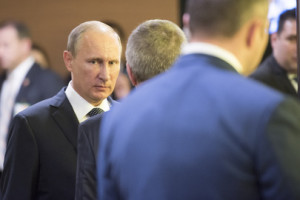 In recent months, the Chinese-Pakistan Economic Corridor (CPEC) has left Pakistanis emboldened, Indians angry, and U.S. analysts worried. Ostensibly, CPEC will connect Pakistan to China’s western Xinjiang province through the development of vast new transportation and energy infrastructure. The project is part of China’s much-hyped Belt and Road Initiative, a grand, increasingly vague geopolitical plan bridging Eurasia that China’s powerful President Xi Jinping has promoted heavily.
In recent months, the Chinese-Pakistan Economic Corridor (CPEC) has left Pakistanis emboldened, Indians angry, and U.S. analysts worried. Ostensibly, CPEC will connect Pakistan to China’s western Xinjiang province through the development of vast new transportation and energy infrastructure. The project is part of China’s much-hyped Belt and Road Initiative, a grand, increasingly vague geopolitical plan bridging Eurasia that China’s powerful President Xi Jinping has promoted heavily.
Pakistani and Chinese officials boast that CPEC will help address Pakistan’s electricity generation problem, bolster its road and rail networks, and shore up the economy through the construction of special economic zones. But these benefits are highly unlikely to materialize. The project is more inclined to leave Pakistan burdened with unserviceable debt while further exposing the fissures in its internal security.
Pakistan and China often speak of their “all-weather friendship,” but the truth is that the relationship has always been a cynical one.Pakistan and China often speak of their “all-weather friendship,” but the truth is that the relationship has always been a cynical one. China cultivated Pakistan as a client through the provision of military assistance; diplomatic and political cover in the U.N. Security Council; and generous loan aid in an effort to counter both American influence and the system of anti-Communist Western treaty alliances. China also sought to embolden Pakistan to harangue India, but not to the point of war because that would expose the hard limits of Chinese support. Despite Pakistan’s boasts of iron-clad Chinese support, when Pakistan went to war with India in 1965, 1971, and 1999, China did little or nothing to bail out its client in distress.













